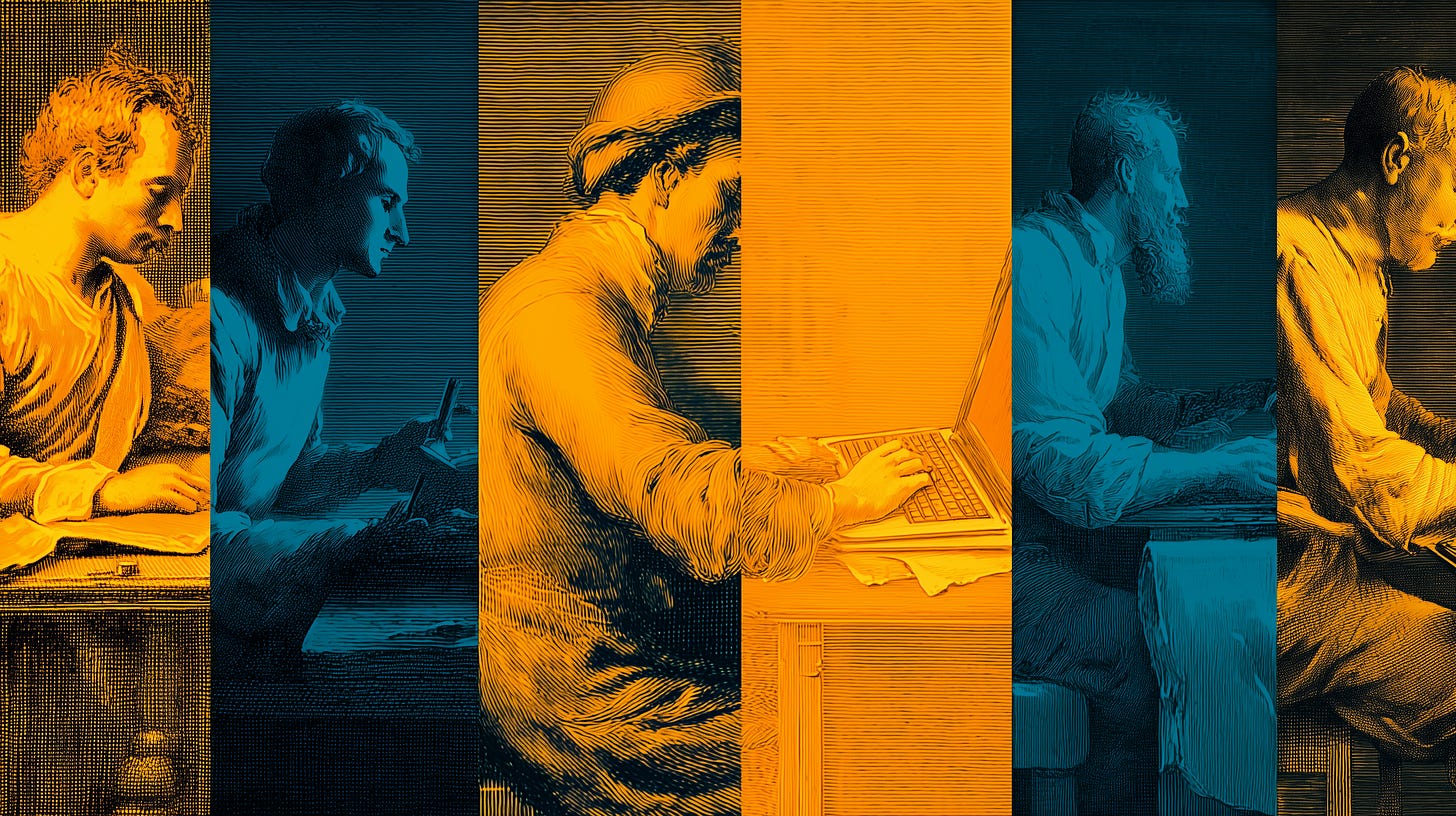The Evolution of Work: From Hunter-Gatherers to AI
How innovations in labor have shaped society, and what's next
Work has always defined what is possible in society. The nature of our work establishes frontiers. Work changes the way we organize ourselves, in communities and companies. If you want to try predicting the future, look at the work we engage in, but also understand how work has gotten us to now.
It's believed that Homo sapiens are somewhere around 300,000 years old.
Until around 11,000 to 12,000 years ago, hunter-gatherer tribes were the way of life. Tribes survived by being mobile, in constant search for food, similar to most wild animals today. This was the only function of work, find food and rest to find more. Their society was only about 100 people.1
Imagine a group of 1,000s of humans walking around an area of land looking for food. It’s not possible. Ecosystems have thresholds, or carrying capacity, which cap a population's size based on the habitat. If they killed a herd to feed all 1,000 people the environment would not sustain them. But roughly 11,000 years ago something changed.
Agriculture was invented. This was the first big innovation. Suddenly tilling and farming became a form of work. With them the paradigm shifted. A simple change in work altered the organization of society.
Hunting tribes had to be small, but farming allowed for villages. Society grew by 10x. Suddenly, with a new line of work, early farming settlements like Catal Huyuk had over 10,000 residents.2
Despite learning about many different cities throughout history, these cities were nothing before the industrial revolution created new types of work. Paris, for example, had a population of 300,000 in 1600.3 Urban work primarily involved caring for horses, working in a shipyard for trade, or operating some form of small craftsmanship.
The United States Census Bureau indicates that more than 94% of the U.S. population lived in rural areas in 1800. London only held a population of 1 million during this same time.4 It was a challenge to support cities the way we do today. Think about trying to feed millions of people before cars, trucks, refrigerators, etc.

The Industrial Revolution led to rapid urbanization and population growth in cities. Industries formed, and with them came skyscrapers. By 1901, three-quarters of the UK population was urban. London nearly tripled in size.
Work underwent a dramatic change. There was a shift from small workshops to larger factories. Administrative jobs were created. Technical talent began rising up. Traditional craftsmanship and agricultural work began to decline.
Whole new categories of work arose.
The cycle of specialization and diversification
Every trend in human history can be explained by looking at the nature of work at that time.5 While the nature of work can be explained by the innovations that brought us to that point.
Innovation creates a cycle of self-sufficiency and interdependence.6
Keep reading with a 7-day free trial
Subscribe to Genius Margins to keep reading this post and get 7 days of free access to the full post archives.



